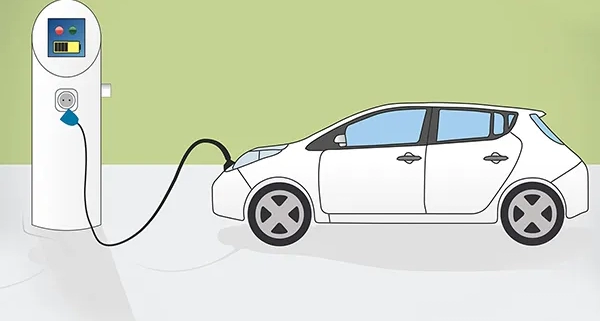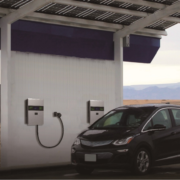A Comprehensive Guide To EV Chargers And Accessories
Electric vehicles (EVs) have emerged as an effective tool to reduce dependence on fossil fuels. Electric vehicles help improve air quality, reduce carbon emissions, meet international environmental standards, and increase energy security by decreasing reliance on imported oil and increasing energy security. The explosive growth of the electric vehicle industry has spurred research and development of advanced technologies, driving innovation and growth within science and technology fields. Countries around the world are taking steps to compete in the global EV market by creating policies and offering incentives that support their industry. This guide discusses the significance of electric vehicle chargers, how drivers can use and purchase them, as well as any special considerations.
Why Are Electric Vehicle Chargers Essential?
-
Providing Energy Power for EVs
Electric vehicle chargers play an instrumental role in encouraging widespread adoption of electric vehicles. Unlike traditional gas stations, car chargers offer users a convenient and eco-friendly method of topping off their batteries. An EV charger connects to an external source of power before transmitting electricity directly into an interface on an electric vehicle’s battery that stores power for driving purposes. Manufacturers of such chargers have designed various models suitable for different locations as a means to facilitate charging options for drivers.
-
Promoting the Development of the Electric Vehicle Industry
Electric vehicle chargers have had a substantial positive effect on industry development. As more charging facilities were constructed, the charging anxiety of drivers decreased significantly and encouraged more buyers to consider purchasing an EV.
Charging facilities’ popularity stimulates related industry chains, including battery manufacturing, EV charging equipment manufacturing, etc. Furthermore, this trend motivates EV charger providers to develop more innovative charging solutions.
What Types of Electric Vehicle Charger Accessories Exist?
-
1. Charging Cable
A charging cable is an integral component in connecting an electric vehicle to charging equipment, typically divided into AC (alternating current) and direct current (DC). AC chargers usually use more common AC cables similar to ordinary household appliances – lightweight yet flexible enough for home and commercial charging applications. DC chargers need to transmit higher power DC power, using thicker more durable DC cables with greater durability for frequent high-power charging processes.
-
2. Connector Adapters
In the U.S., Level 1 and 2 chargers typically utilize J1772 standard connectors while Type 2 (Mennekes) is more popular in Europe. DC chargers use DC connectors such as CHAdeMO, CCS (Combined Charging System), Tesla Supercharger, etc, making these more suitable for Level 3 fast chargers as they offer higher power DC charging solutions.
-
EV Charger Pedestals
EV charger pedestals serve to secure and balance an electric vehicle charger during use, providing back-to-back, side-by-side, and single stands with cable management features to prevent cable damage and ensure user safety when connecting and disconnecting their chargers. These pedestals are available back-to-back, side-by-side, or as single stands containing cable management features that prevent cable damage. They may include back-to-back stands that feature back-to-back or side-by-side options or single stands with cable management.
Cable management features to avoid cable damage as well as back-to-back stands to support and ensure its stability during its usage ensuring user safety when connecting or disconnecting their charging device from their respective stands amidst their usage process and also improve stability during the charging process and ensuring user safety when connecting/disconnecting their device from their pedestal stands during usage process and ensure safe usage when connecting/disconnecting from your charger pedestal stands.
Additionally, in commercial and public settings EV charger pedestals provide an organized way of organizing charging equipment, improving station management efficiency and space utilization. Furthermore, pedestals make servicing an EV charger simpler, making ongoing operational performance and reliability of this piece of equipment more assured.
How Do I Use a Public Charging Station?
-
Finding an EV Charging Station
Electric vehicle drivers can find nearby charging stations by using either their car navigation system, the Charging Station Finder app, or by searching Google for “rapid charging stations near me”.
-
Selecting an Appropriate Charging Station
public charging stations typically provide different power levels and types of charging posts (Level 2, Level 3 (DC fast charging)), to allow drivers to select one suited to their EV model and charging needs.
-
Connecting Your Electric Vehicle
For safety’s sake, connect the charger plug of the electric vehicle directly to its charging socket via its connection cable on the charging post (ensure a secure connection).
-
Start Charging
A driver can begin charging by using their charging card, mobile app, RFID card, or touch screen at a charging station.
-
Waiting for Charging to Complete
Charging times vary based on both the power and battery capacities available at each charging station, giving drivers plenty of time to rest, shop, or eat nearby.
-
Finish Charging and Pay
Once charging has concluded, drivers should remove their connector and place the connection cable properly before disconnection. Nearly all public EV charging stations require payment – payment methods could include charging cards, mobile apps, or credit cards – so once charging has concluded and paid according to station rules.
Can I Own a Level 2 Electric Vehicle Charger?
Purchase of a level 2 EV charger can be done from an EV charger dealer. For faster charging processes, opt for a high-power level 2 charger like the Joint EVC27 which delivers 22kw. Alternatively, smart home charging may help prevent you from forgetting to charge frequently – an EV charger supporting smart charging may be a better solution.
Conclusion
In this article, we have explored the purpose and uses of chargers, various types of electric vehicle accessories, and steps drivers can take to use charging stations effectively. Hopefully, this guide has provided drivers with useful information that helps them better utilize and understand their EV charging equipment. As the market expands for electric vehicles, more and more wholesalers offer innovative solutions to provide people with cleaner mobility options.





Leave a Reply
Want to join the discussion?Feel free to contribute!